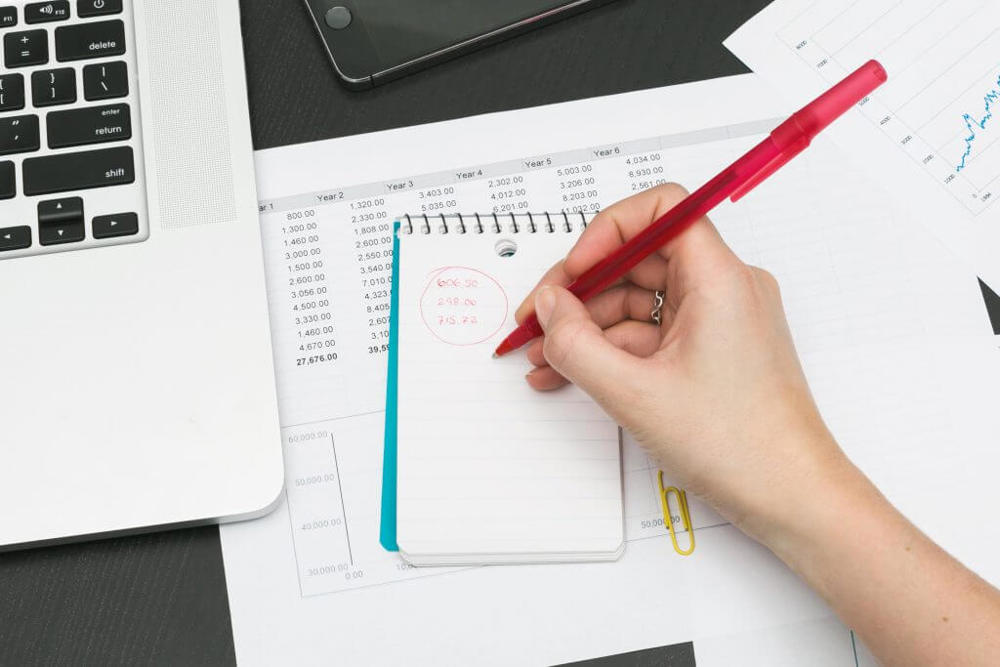Despite our best efforts, no one can predict when a rainy day will come along. Downpours have a habit of catching you out when you least expect it. But that doesn’t mean you’re totally powerless. What you can control is how much money you set aside for goals such as planning your future retirement to lessen the impact of that inevitable storm.
How much is enough and what’s right for you? If you’re wondering how much you should save, you’re in the right place. We’ll explain what emergency funds are, common expenses and offer some practical guidance to help you get started.
What is an emergency fund?
Often called a rainy day savings or a rainy day fund, an emergency fund is a safety net. It’s a lump sum of money that you set aside for unexpected expenses such as a broken boiler, a car repair or in the unfortunate event as losing your job to cover living expenses. This fund can offer you peace of mind when something goes wrong and help you get back on your feet. If you don’t have one, you may take drastic measures such as taking out a loan or credit card.
Schroder’s Financial Wellbeing research found that 85% of Brits are affected mentally or physically by financial worries.
And with Yorkshire Building Society revealing that a quarter of UK workers reported having less than £500 in savings, it’s easy to see why. If you find yourself worrying about what’s around the corner, it may be time to start thinking about building an emergency fund.
It’s easier than you might think to start building an emergency fund. Once you figure out the essentials and make a few tweaks to your budget, you’ll be ready for any weather.
Starting your emergency fund
Planning and consistency are key to building a robust emergency fund through regular savings. And while you should build one as soon as possible, it’s better to set one up in later life than not at all. An emergency fund isn’t right for everyone. If your circumstances mean you can only focus on getting by or you’re struggling with debt payments, seek financial advice.
You may be wondering how much you need to save or even "how much should I save per month". There is no ‘perfect amount’ to aim for as your circumstances will be different from everyone else’s. The key is understanding what you want to achieve and making regular saving a habit.
For instance, your neighbour might aim to save £5,000 to cover the costs of home maintenance and child care. Yet, this would not be a realistic savings goal if you’re a single renter with no kids. If your circumstances mean you can only focus on getting by or you’re struggling with debt payments, seek financial advice.
Before building your emergency fund, decide on a target amount to save for. Grab a pen and notepad and take the time to consider the following:
- Your current incomings (monthly wage and benefits)
- How much you spend on essentials (groceries, utilities, rent or mortgage). For example a months worth of expenses.
- The amount you have leftover
It may seem logical to put all your leftover money into your emergency savings fund but it’s actually possible to save too much. Doing so won’t give you wiggle room for anything else.
Whether you put your emergency fund into a savings or current account, it’s vital that you can easily access your money when you need it most.

Making saving a habit
The common mistake many people make is not prioritising their monthly savings plan spending. When you put money aside immediately after payday, this reduces the temptation to spend it. It also puts the focus on managing your disposable income around what’s left after savings and the essentials.
Setting up a standing order in your regular savings account is a smart way to save. For example, if you get paid on the last working day of the month, you can set up a standing order to put money into your savings on the first day of the new month. This means anything left after your direct debits and monthly expenses is yours to spend, guilt-free.
Many banks such as Starling offer virtual savings pots within current accounts. Other banks offer ‘round-up’ features, which make it easy to put spare change from purchases towards savings. While both allow you to ring-fence money, they might not be for everyone. Consider whether you’d dip into your savings pot from time to time if it was more accessible than a dedicated savings account.
Challenges for savers in 2022
In less than five years, we’ve seen a global pandemic, rising cost of living, inflation and more recently the Russia-Ukraine war. If these events have taught us something, it’s that no matter where you are in the world, global events can have a disastrous knock-on effect on your wallet and savings. The good news is that with a little planning, you can build a emergency fund that can help your next bump in the road feel more like a pebble, than a sinkhole.
What the Bank of England’s interest rate increase means for your savings
To tackle the rise of inflation due to the ongoing conflict in Ukraine, the Bank of England raised interest rates to 0.75% in March 2022. Rates have been as low as 0.01% in the past few years. But this new rise means that the base rate is now back to where it was before the pandemic began.
If you’re thinking about switching savings accounts or keen to get a good rate on a new ISA, you may be in for a shock. Banks, building societies and providers may not necessarily follow the Bank of England’s lead when it comes to raising interest rates. If they do follow suit, it may take months for them to implement them, meaning you’ll have an even longer wait to gain interest on your hard-earned money.
To ensure you’re making an informed decision, you can find the latest rates and leading plans on Money Saving Expert’s savings account guide.
Determining how much you can save
How much you save is down to your unique circumstances. Many financial experts recommend the three-month-rule, which states that you should aim to save up to cover three months of essential costs. This means that if you spend £1,500 a month on housing, food and bills, you should aim to save £4,500. But, if you have income protection insurance, you could allocate those savings towards other essentials such as a home repair.
15% of adults said they have no clue how to start creating a financial plan and almost half of Brits (49%) are worried about their finances, according to the Shroder's Personal Wealth Financial Wellbeing survey. About half (49%) of UK adults could get by for three months if they lost their job or other main source of income, according to the Money Advice Service’s Financial Capability Survey.
Research from Yorkshire Building Society found that 30% of UK workers could only get by for one month if they had to dip into their savings to cover their expenses.
So, whatever your circumstances, there will be times when you can’t afford to save or have to save less. In these times, you’ll need to adjust your savings as things change to ensure you still have a financial buffer in place in case a rainy day comes along.
Once you’ve determined how much you can save it’s time to get into the regular savings habit. It’s a good rule of thumb to save little and regularly, rather than putting pressure on yourself to save a huge amount. This can help you budget - especially if you can commit to a monthly savings plan.
Every penny counts. Regular savings don’t have to involve putting aside big amounts into your fund. Even small contributions will add up and can make all the difference when that day comes. Looking for ways to save money, can help. For example, if you saved the £3.50 you’d spend on your daily coffee, you’ll save £1,277.50 in a year.
Common rainy day scenarios
If we could see into the future, we’d know exactly how much that new car or boiler repair would cost. Not all the below scenarios will apply to you, but it’s worthwhile considering how these events might impact your finances. For example, repairing your phone could set you back a couple of hundred pounds, but a car repair may be over a grand depending on your car's brand and condition.
Here are common unexpected expenses to think about:
- Car repair or replacement
- Technology breakdown
- Glasses or optician costs
- Pet vet bills and other costs
- Washing machine repair or replacement
- Lending money to friends or family
- Emergency dental work
- Emergency home repairs
- Unexpected children’s costs
- Mobile phone repair
What one person considers a torrential thunderstorm, another person might consider a light passing shower. Start small with regular savings instalments. Over time, you’ll soon reach your savings goals and have a financial buffer in place.

How much should you save by age?
We typically make our start on the career ladder in our twenties so it makes sense that savings will grow as we get older and settle into secure jobs, family arrangements and lifestyles.
Of course, our paths and circumstances are all different. It’s not uncommon for people to change careers or reach big milestones in later life. However, knowing how much Brits generally save by generation could help you decide what to aim for. Here are the average savings by age group, according to Finder.com:
- Generation Z (Born after 1996): £2,530.71
- Millennials (Born between 1981-1996): £4,614.04
- Generation X (Born between 1965-1980): £6,160.57
- Baby boomers (Born between 1946-1964): £9,758.54
- Silent generation (Born between 1928-1945): £9,497.96
If you haven’t met your generation’s target or haven’t started saving, don’t despair. You’re looking for ways to build your own financial buffer by reading this article. That consideration and forward-thinking will give you the motivation to stick to a successful savings fund.
More ways to boost your savings
Once you’ve started your rainy day fund it’s time to keep nurturing it. Regular instalments will give it the food it needs to grow. Although you may need to dip into your savings pot when a the day comes along, know that the goal is to keep it growing. It’s this continuous nurturing that will help you bounce back from the next spot of bad weather.
Here are three ways to keep your rainy savings fund healthy:
1. Pay off your debts first
For most people, it’s better to pay off debts before saving. Debts come with higher interest rates. Although the general rule of thumb is to save whilst paying off debt, take a moment to think about the bigger picture:
- List each of your debts, their amounts, minimum payments and interest rates
- Do any of your debts have high-interest rates? If so, consider prioritising paying these off first.
- How much would it cost to pay your minimum debt payments for all debts? Is this manageable?
- Are you expecting a windfall such as a bonus, inheritance or tax refund? If so, where would it make the most impact?
Reviewing these questions can help give you the perspective you need to tackle your debts. But if you still think your situation is unmanageable, ‘we can help you get the support you need by helping you connect to a regulated financial adviser for free.
2. Protect and earn interest on your savings
When you put your savings into a UK-regulated bank or building society, you’re covered by the Financial Services Compensation Scheme’s (FSCS) savings protection if they go bust. This limit is up to £85,000 for individual accounts and up to £170,000 for a joint account. There are many options and shopping around can help you make your money go further. Whether you have yet to open an account or currently have one, think about the following:
- What is the interest rate?
- Are you required to keep a minimum balance?
- How easy is it to access your cash?
- Are your savings tax-free?
- Does your bank share the savings protection limit with other banks?
3. Cut down on non-essential expenses
Scrutinising your outgoings can reveal hidden savings opportunities. Take a look at your most recent bank statements. Are there gym membership fees or subscriptions that you don’t use anymore? Could you get a better deal on your utility bills by switching providers?
Here are other expenses to consider cutting back on:
- Takeaway food and drink
- Magazine and digital subscriptions
- Buying new clothing each season
- Re-evaluating phone, internet and TV contracts
- Impulse buys at the supermarket
- Driving shorter distances that are walkable

When to seek expert advice
Saving is a good habit that can help you bounce back from unexpected expenses. It’s also not necessary or ideal for everyone. If you’re faced with debts, it could be more beneficial for you to pay them off or reduce them before building your emergency fund.
The information we’ve offered can help you get started with your own rainy day savings. But, if you think you can’t afford to save or have urgent expenses such as loans or credit repayments, you should seek regulated financial advice.
When you work with a financial adviser, they’ll help you gain a 360-degree view of your financial situation.
Their expertise can offer the insight you need to build a solid financial plan, helping you achieve your goals and prepare for the future. They can also help you:
- Determine whether you’re entitled to any benefits
- Compare recommended insurance products for added protection
- Identify areas where you could reduce your monthly outgoings
- Make your money work harder in savings or investments
How we help you connect to a local expert
Need expert help with your savings plan or want to speak to an expert about long-term investments or managing your portfolio? We’re here to help you get trusted, regulated financial advice, so you can better understand your options.
Our free service is quick and easy and it works in four simple steps:
Step 1: Tell us a little bit about you
We make connecting with an FCA-regulated financial adviser easy. Tell us your postcode, contact details and the service you’d like to discuss. We’ll then shortlist advisers in your area to find the right expert for your needs.
Step 2: Meet your local financial adviser
Your local expert will be in touch for a quick initial chat about what you need help with. They’ll also invite you for a free consultation to discuss your circumstances in more detail.
Step 3: Your free no-obligation consultation
This meeting gives you a chance to learn more about your adviser’s services and fees. While your adviser can learn more about your needs. They’ll explain whether financial advice could benefit you. If they can’t help, they’ll offer free, helpful recommendations to point you in the right direction.
Step 4: Share your feedback
Our friendly customer experience team will give you a quick call to see whether you were happy with your adviser. If for whatever reason they didn’t meet your expectations, let us know. Our satisfaction guarantee means we’ll match you with another expert, no questions asked.
Ready to match with an expert financial adviser to learn how you can start regularly saving into your own emergency fund? Click the button below to match with your expert in seconds!
Editor’s note: This article was originally published in March 2021 and has been updated for accuracy, freshness and comprehensiveness.



